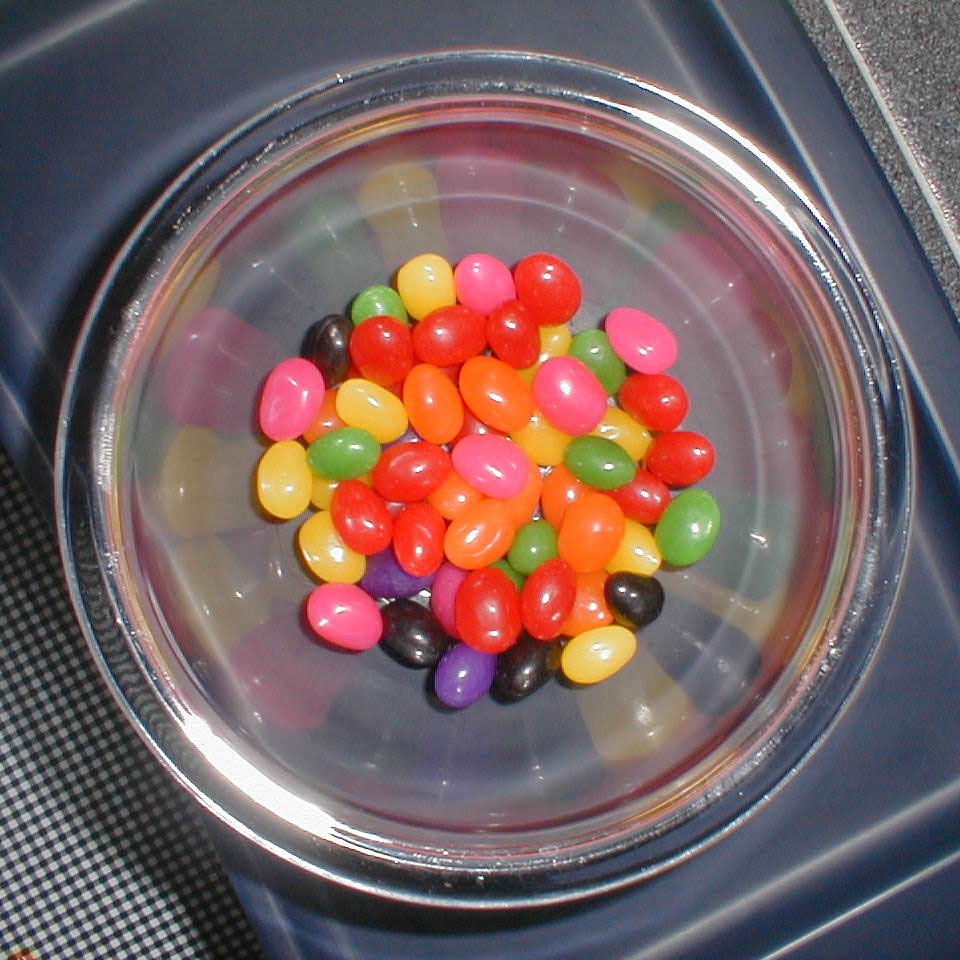
Are the jellybeans in the image at right colorful? Actually, no. Although lemon jellybeans appear “yellow” and cherry jellybeans appear “red,” our experience of color is created by our visual systems and is not inherent to the jellybeans themselves. The jellybeans each have certain reflectance characteristics—the wavelengths of light that are reflected or absorbed—that are physical properties of those objects. However, color is our subjective perception of the wavelengths of light that bounce off of objects and onto our retinas. So how do we get from the physical properties of light wavelengths to our perceptual experience of colors? That is the subject of this chapter.
Photoreceptors in the retina begin the process by selectively responding to different wavelengths. A single type of photoreceptor alone cannot accomplish color vision since it cannot distinguish between enough wavelengths, as demonstrated in the activity on The Principle of Univariance (Activity 5.1). We overcome this difficulty by using three different types of cone photoreceptors to code for color, a concept known as trichromacy. One of the key observations in developing the trichromatic theory of color vision was the concept of metamers—that some miztures of light look identical to other, single wavelengths of light. Another activity illustrates additive and subtractive forms of Color Mixing (Activity 5.3).
Later in the visual system, the output of the three types of cones is translated into Opponent Process mechanisms (Essay 5.1), such as red versus green and blue versus yellow. These opponent pairs are responsible for an interesting and fun phenomenon called the negative Afterimage (Activity 5.4).
The purpose of our visual systems is to tell us what is out there rather than about the particular wavelengths of light that strike our eyes. For instance, the light reflected off of a red shirt under the fluorescent lighting of a department store might be very different than the light reflected from the same shirt outside in the sun. Yet, in both cases we see the shirt as red. In the end, we want to know about the surface qualities of the objects the light reflects off of, not about the light source itself. Therefore, our visual systems take into account the luminance characteristics of a scene to tell us what the actual color of objects are in the world, regardless of the color of light illuminating them. This ability, known as Color Constancy (Activity 5.5 and Essay 5.4), is trickier than you might think; a related concept, lightness constancy, is illustrated by a set of Illusions of Lighting (Activity 5.6).
Another interesting question is whether everyone’s perception of color is the same. For instance, is your conscious experience of the color red the same as other peoples’ conscious experience of red? This Philosophical Problem of “Inverted Qualia” (Essay 5.2) is addressed in one of the web essays for this chapter. From a scientific perspective, most peoples’ experience of color is similar, even in cultures that use fewer color words than we do in English. However, lacking one or more types of cones is fairly common, and causes color blindness. The activity on Trichromacy (Activity 5.2) illustrates the physiology of color blindness, and the essay on Experiencing Color Blindness (Essay 5.3) provides a hint about what the world looks like to a color-blind individual.
Image courtesy of Pepper Williams